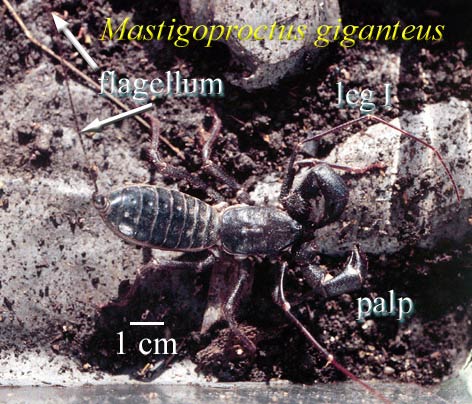- Uropygi (Thelyphonida, Uropygida)
Common names: whip scorpions, vinegaroons
Probability of encounter: low
Quarantine importance: no known importance, although some species are used in the pet trade and may have small, threatened populations.
Similarity to mites: none other than general arachnid features. Whip scorpions are much larger than mites, have clearly segmented opisthosomas, and a long posterior flagellum.

Body tagmata: prosoma, opisthosoma, telson (flagellum)
Eyes: 2-4 pairs of lateral ocelli
Antennae: absent
Mouthparts: 2-segmented fang-like chelicerae; robust, raptorial 5-segmented palps with distal claws
Legs: 4 pairs; legs I antenniform
Distinguishing features: segmented opisthosoma, stabbing chelicerae, long flagellum ('tail'), acetic acid defensive spray (vinegaroons)